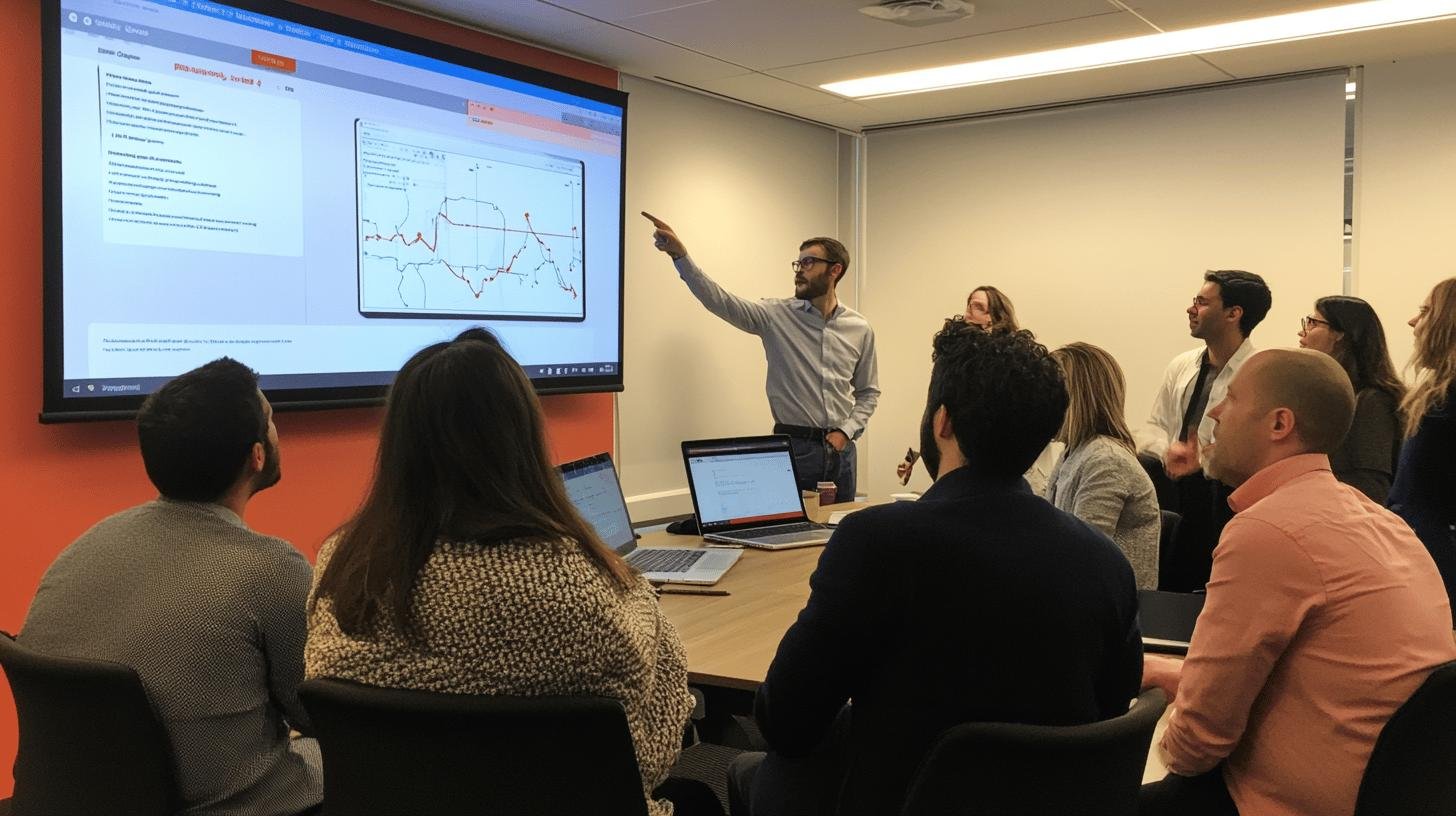Have you ever considered delegating your innovation journey to AI? The secret to transforming our creative and production processes, from writing to producing eye-catching images, lies in the integration of generative AI. Tools like ChatGPT and Dall-E are paving the way for smarter and speedier work processes. But going into AI isn’t simply about grabbing the shiniest gear on the shelf; it’s about having a strong approach. Ready to find out how generative AI integration can be the turbo boost your innovation needs? Let’s get started!
Understanding Generative AI Integration
Generative AI is like a magic box, creating text, images, and music. Imagine having a smart helper aiding you in story writing or poster designing. It works using algorithms, which are like instructions directing AI based on incoming information. So, if you need a catchy tune or a stunning art piece, generative AI delivers efficiently.
Here are some top generative AI tools:
- ChatGPT: Ideal for crafting text content, answering queries, and essay writing.
- Dall-E generates unique images from text descriptions.
- Midjourney: Focuses on high-quality visual art creation.
- Jasper AI: Crafts engaging marketing content and social media posts.
- RunwayML: Provides tools for creating interactive media and art projects.
Planning is key when integrating AI into work, similar to building a house needing a solid foundation. Start with a tech audit to assess what you have. Set clear goals to know your destination and select the right tools for tasks. This organized approach makes AI a seamless workflow part, boosting innovation and efficiency.
Strategic Approaches to Generative AI Implementation

Strategic planning for generative AI is like preparing a game plan for a big match. This ensures you’re making informed decisions leading to success, rather than hoping for the best. A thoughtful integration strategy boosts both innovation and efficiency.
1. Conducting Audits and Defining Objectives
Begin by auditing your current systems. This involves assessing existing structures and determining their readiness for AI. Don’t try to fit a square peg in a round hole.
Afterwards, define your objectives by asking, What do we want to achieve with AI? Clear, specific goals, such as enhancing customer service or accelerating content creation, provide clear targets to aim for.
2. Selecting Tools and Providing Training
Choosing the right tools is like selecting the best equipment for your hobby. Opt for tools that fit your needs; for instance, ChatGPT for text or Dall-E for images.
Team training is also crucial. Imagine having a new gadget but not knowing how to use it—without proper training, AI implementation loses value. Educate your team to make them AI-savvy, enabling them to spot opportunities and address concerns effectively.
3. Roadmap to Successful AI Implementation
- Audit Existing Systems: Assess current technology and identify needs.
- Set clear objectives: define success for your AI project.
- Choose the Right Tools: Select AI tools that meet your objectives.
- Train Your Team: Ensure everyone knows how to use AI effectively.
- Encourage Experimentation: Allow your team to explore AI’s potential and innovate.
Overcoming Challenges in Generative AI Integration
Integrating generative AI presents some challenges, like resistance to change and data security concerns. However, with the right strategies, these can be managed, paving the way for successful AI utilization.
1. Resistance to Change and Data Security
Convincing people to change, like switching to a new cereal brand, isn’t easy. Some fear AI might replace jobs. In reality, AI automates tasks but mostly supports, rather than replaces, human roles. Clear communication is key to alleviating these fears.
For data security, think of AI as a treasure chest requiring protection. Implementing strong security measures is essential, akin to setting up defenses like a castle’s moat to safeguard data.
2. Ethical Considerations
Addressing ethical concerns in AI is like solving a tricky puzzle. A major challenge is bias, where AI picks up biases from training data. Continuous monitoring and adjustments ensure AI remains fair.
Misuse is another concern. AI is powerful and, in the wrong hands, could cause problems. Establish guidelines to prevent misuse and ensure responsible AI utilization.
Practical Applications and Benefits of Generative AI

Generative AI acts as a tireless assistant, handling routine tasks and freeing up time for creative ventures. Businesses using AI for automation, like content creation and data analysis, operate at lightning speed. This allows employees to focus on strategy rather than repetitive tasks. AI not only saves time but reduces errors and boosts productivity.
Real-World Examples
In marketing, tools like Jasper AI help produce engaging content swiftly, adapting to fast-paced social media trends. In customer service, AI chatbots manage frequent inquiries, allowing human agents to address complex issues.
In e-commerce, AI personalizes shopping by analyzing data to suggest popular products, raising satisfaction and sales. In healthcare, AI analyzes medical data, aiding doctors in more accurate, quicker diagnoses—a potential lifesaver.
- Increased Efficiency: AI handles repetitive tasks, saving time.
- Cost Reduction: Automation significantly reduces labor costs.
- Improved Accuracy: AI minimizes errors in data-driven tasks.
- Enhanced Creativity: Frees teams for innovative work.
- Personalization: Tailors experiences to individual preferences.
- Scalability: Easily adapts to rising demand.
Best Practices for Successful AI Integration
Successful AI integration is like cooking the perfect meal using a well-thought-out recipe. Best practices are essential elements, ensuring smooth operation while maximizing AI benefits.
1. Continuous Monitoring and Feedback
Continuous monitoring keeps AI integration on track, acting like a GPS on a road trip. Real-time insights allow for timely adjustments, ensuring accuracy. User feedback is equally vital for tuning AI systems to meet their needs.
2. Pilot Projects and Team Involvement
Pilot projects serve as test drives for AI, showing performance in a real-world setting without diving in fully. They help identify issues, offering a low-risk chance for improvements. Involving the team in this process fosters collaboration and uncovers new AI utilization avenues.
- Define Clear Goals: Establish success criteria from the outset.
- Start Small: Use pilot projects to manage risks.
- Gather Feedback: Collect regular input from users and stakeholders.
- Train Your Team: Provide skills needed for working with AI.
- Iterate and Improve: Continuously refine based on monitoring data.
Conclusion
Generative AI integration isn’t just about plugging in new tech; it’s about real transformation. We dove into ways to strategically plan and deploy AI, from conducting audits to training teams. We tackled challenges like data security and ethical concerns, offering solid solutions.
Practical applications show the magic of AI in boosting productivity and cutting costs. Following best practices ensures smooth sailing in this AI journey. Embrace these insights, and you’ll be set for meaningful, impactful generative AI integration.
FAQ
What is generative AI integration?
Generative AI integration involves weaving AI tech into your business to produce content like text and images. It’s all about setting clear objectives, auditing current systems, and picking the right tools for a seamless fit.
What are generative AI examples?
Generative AI examples include tools like ChatGPT for conversational text and Dall-E for generating images. These AI platforms help create diverse content swiftly, saving time and spicing up creativity.
What is meant by generative AI?
Generative AI means AI that can create stuff, like images, text, or even music. It’s like having a virtual artist or writer by your side, letting you speed up those creative vibes.
What is the difference between AI and generative AI?
AI is a broad term for tech that mimics human thought. Generative AI specifically creates new content. It’s the creative branch of AI, focusing on generating fresh and original outputs.
How can I integrate generative AI into my business?
Start with a tech audit, set clear goals, and choose suitable AI tools. Train your team to adapt and plan strategically to make the most of generative AI integration.




